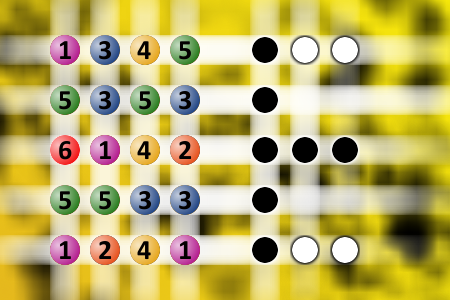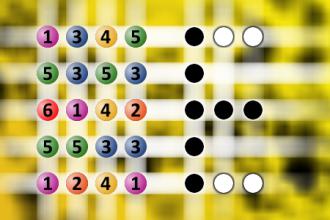What a winning combination?
The computer chose a secret code (sequence of 4 digits from 1 to 6). Your goal is to find that code. Black circles indicate the number of hits on the right spot. White circles indicate the number of hits on the wrong spot.Correct answers: 43
The first user who solved this task is On On Lunarbasil.
#brainteasers #mastermind

Wait Until the Police Arrice
Two men got out of their cars after they collided at an intersection.
One took a flask from his pocket and said to the other, "Here, maybe you'd like a nip to calm your nerves."
"Thanks," he said, and took a long pull from the container.
"Here, you have one, too," he added, handing back the whiskey.
"Well, I'd rather not," said the first. "At least not until after the police have been here."
One took a flask from his pocket and said to the other, "Here, maybe you'd like a nip to calm your nerves."
"Thanks," he said, and took a long pull from the container.
"Here, you have one, too," he added, handing back the whiskey.
"Well, I'd rather not," said the first. "At least not until after the police have been here."

